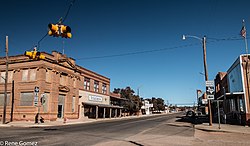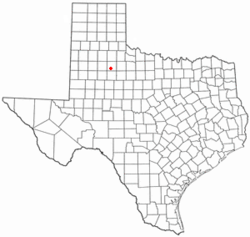2000 census
As of the census [3] of 2000, 1,088 people, 472 households, and 288 families resided in the city. The population density was 673.4 inhabitants per square mile (260.0/km2). The 641 housing units averaged 396.7 per square mile (152.8/km2). The racial makeup of the city was 72.52% White, 3.40% African American, 0.83% Native American, 0.18% Asian, 0.37% Pacific Islander, 21.14% from other races, and 1.56% from two or more races. About 31.25% of the population was Hispanic or Latino of any race.
Of the 472 households, 22.5% had children under the age of 18 living with them, 47.5% were married couples living together, 10.6% had a female householder with no husband present, and 38.8% were not families. Around 37.1% of all households were made up of individuals, and 20.8% had someone living alone who was 65 years of age or older. The average household size was 2.22 and the average family size was 2.89.
In the city, the population was distributed as 22.9% under the age of 18, 6.1% from 18 to 24, 22.3% from 25 to 44, 23.4% from 45 to 64, and 25.3% who were 65 years of age or older. The median age was 44 years. For every 100 females, there were 83.8 males. For every 100 females age 18 and over, there were 82.0 males.
The median income for a household in the city was $24,286, and for a family was $32,772. Males had a median income of $25,972 versus $18,631 for females. The per capita income for the city was $14,601. 19.8% of the population and 16.2% of families were below the poverty line. 24.8% of those under the age of 18 and 21.7% of those 65 and older were living below the poverty line.



